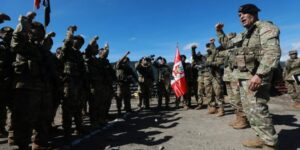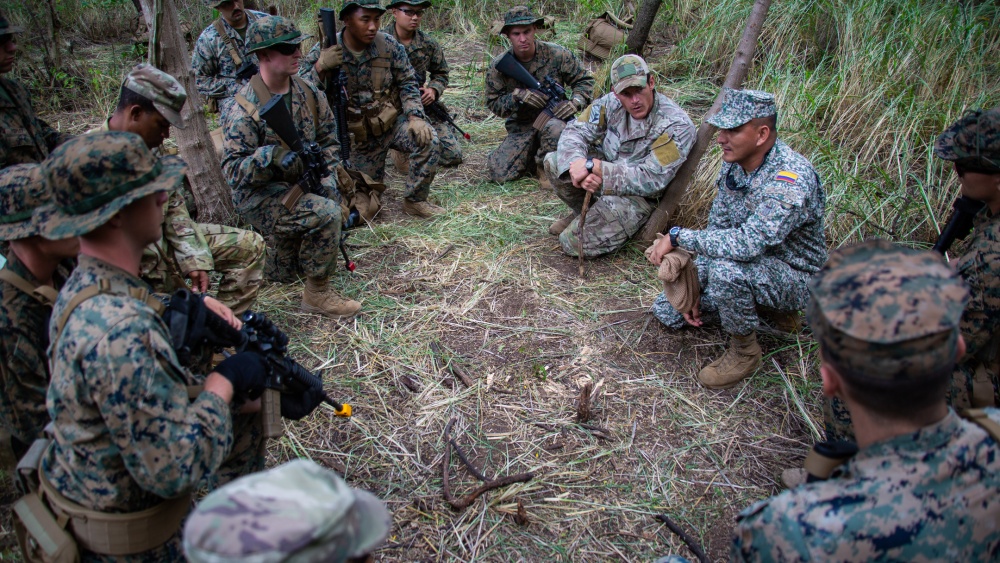When we observe the four generations of war, we realize that the evolution of technology influences and changes the form of conflicts. This technological evolution also depends on the nature of conflicts, whose great characteristic today is fragmentation. During the Cold War there were two main models. The war that was constantly being prepared, with millions of NATO and Warsaw Pact soldiers and armor permanently mobilized in Europe, i.e. a repetition of the world wars, and the revolutionary war, characterized by guerrilla-type confrontations against conventional armies.
At the height of this period, there was a stream of scholars who described the 20th century as the “Age of Small Wars”. This was because conventional warfare between the blocs led by the atomic powers had become practically impossible to break out because of the nuclear threat, and there was an expansion of conflicts in the periphery, which came to be called “low-intensity”, “guerrilla”, “irregular”, “asymmetric”, etc.
The use of machine guns

With the evolution of armaments, concentrations of military means have become very vulnerable. Since the American Civil War, the machine gun forced infantry formations to disperse and use the ground for shelter; the evolution of artillery accentuated this in World War I. During the Cold War, in the face of a nuclear artifact, a concentration of hundreds of thousands of combatants or armored personnel becomes a highly rewarding target. Today, the technological evolution of conventional artillery allows them to perform on a battlefield in a manner similar to that of a small-caliber nuclear weapon.
The abrupt change in the post-Cold War scenario has brought traditional warfare to a collapse. The last model of old-fashioned confrontation was the Iran-Iraq War in the 1980s. It is unlikely that this type of conflict will be witnessed in the near future, not only because military concentrations are vulnerable, but also because no one has the means to wage such long wars with sophisticated and expensive weaponry. Today the belligerents have access to other methods.
Take the Gulf War in early 1991: the (predictable) outcome was determined by the American bombing campaign prior to the invasion. The United States had decisive superiority. The outcome was already known, regardless of the length of the conflict.
Urban guerrilla warfare
Most wars today are not fought between states. Since some actors have been broken up, the fighting often occurs between political entities (legitimate or not), arising from the weakening of nations, the loss of countries’ monopoly on violence, the division of nations, and/or separatist movements. It is worth saying that this is the only type of war in which the Americans were defeated, as an example the Vietnam War. This is the kind of conflict that is going on in the Valley of the Apurimac, Ene, and Mantaro Rivers (VRAEM) in Peru, in the slums of Rio de Janeiro, in the Colombian jungles, in Iraq, in Syria, in the Central African Republic, in the Sahel, in Mali, Syria, or Nigeria.
The most striking result of this kind of phenomenon on the ground is the fragmentation of conflicts. Today, the technological superiority, equipment and training of the armed forces of some military powers is such that it becomes impossible for them to be faced on a conventional battlefield. Consequence: The classic battlefield disappears in its traditional form to give way to several micro-battlefields, or even fighting in which there is no front or rear, when terrorist attacks or criminal insurgency occurs.
The armed and police forces must be restructured to have the capacity to respond to hypotheses that are not yet well known and that will occur inside and outside the national territory. If it is necessary to intervene in Rio de Janeiro, Haiti, Africa, or anywhere else, it is necessary to balance the forces quantitatively and qualitatively, as well as to identify the exact measure of use of armor, helicopters, manpower, drones, and other vectors.
Cyber Warfare
Today’s hybrid warfare encompasses the concept of combat in multiple domains, some call this non-military warfare. The cyber aspect is one of them and can lead to the neutralization or degradation of many technical means of the enemy or opposing forces.
As early as 1998, the United States and NATO jammed electronic equipment in Serbia before intervening there and did the same in 2003 in Iraq. In 2010, Robert Knake co-authored with Richard Clarke, recorded in Cyber War: The Next Thread to National Security that there is a high possibility that this strand has the potential to change the world military balance and thus alter political and economic relations. Clarke believes that rival powers to the United States, such as Russia and China, have already placed so-called logic bombs on the American network, capable of destroying part of the country’s infrastructure.
Cyberattack vs. military force
Currently, when the term cyberwar is used, it refers to peacetime aggressive maneuvers in cyberspace. These actions remain limited because, at the moment, the cyber weapon is too little controllable to allow massive maneuvers, such as destroying the five or six information systems that make modern societies function: military, health, banking, transportation, supply, energy. Such an action causes a society to collapse without having fired a shot, like power blackouts for example.
However, there are very effective limited cyber weapons. The Stuxnet virus, launched in 2010 by the Americans and Israelis against the centrifuges of Iran’s nuclear program, destroyed tens of thousands of computers.
In 2019, Israel was the first country to respond to a cyber attack with a military force. Following a cyber offensive by Hamas, the Israelis launched an airstrike on a building in the Gaza Strip, where the attacks were coming from. In turn, as early as 2020, Hamas was able to gain access to various personal information of young Israeli military personnel through fake female profiles that stimulated the vanity of the fighters and encouraged them to expose personal photos or talk about operations.
Cyberwar is here to stay and is no longer a conflict of the future, but the most important conflict of the present. Nations that do not take precautions as soon as possible will become increasingly vulnerable and will have missed the streetcar of history.
Disclaimer: The views and opinions expressed in this article are those of the author. They do not necessarily reflect the official policy or position of any agency of the U.S. government, Diálogo magazine, or its members. This Academia article was machine-translated.









